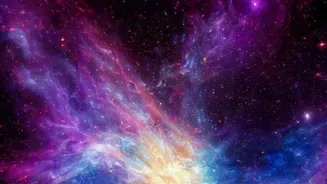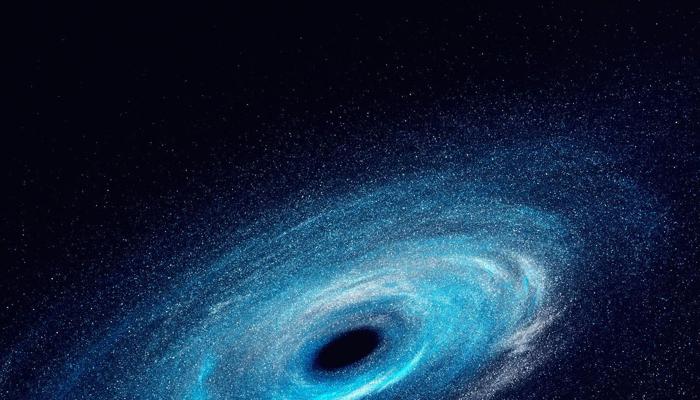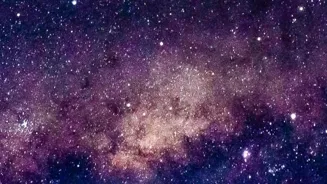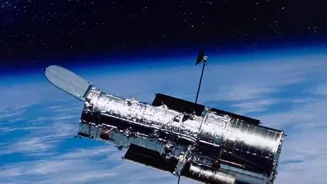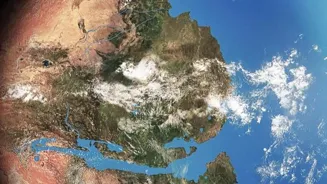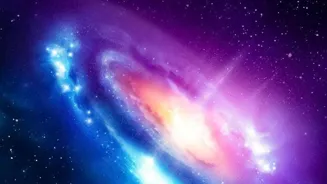Dive into the cosmic ballet of galaxies, where waltzes and collisions shape the universe's grand tapestry. Read on to unravel the secrets of galactic evolution and the mesmerizing dance of celestial giants
Our universe, vast and mysterious, is home to billions of galaxies, each a swirling island of stars, gas, and dust. These galaxies aren't solitary wanderers; they engage in a fascinating cosmic ballet, interacting with each other through gravitational forces.
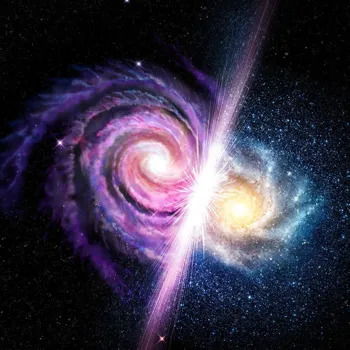
Sometimes, this interaction is a gentle waltz, a slow and graceful exchange. Other times, it's a boisterous collision, a galactic merger that reshapes the very fabric of these celestial giants.
Understanding these galactic relationships provides profound insights into how galaxies evolve and how the universe itself has transformed over billions of years.
Galaxies cluster, interact gravitationally, shaping each other, causing star formation bursts
Galaxies are not uniformly distributed in the cosmos. They tend to cluster together, forming groups and even larger clusters of galaxies. Within these cosmic neighborhoods, galaxies exert gravitational influence on one another.
This gravitational tug can distort their shapes, create bridges of stars and gas stretching between them, and even trigger bursts of star formation. These interactions cause immense tidal forces, which can rip material from one galaxy and transfer it to another.
The effects are profound and long lasting.
Galactic mergers reshape galaxies dramatically
The most dramatic form of galactic interaction is a merger. This occurs when two or more galaxies collide and eventually combine to form a single, larger galaxy. Galactic mergers are common events in the universe, especially in the early universe when galaxies were closer together.
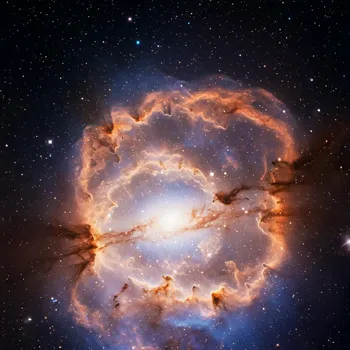
Our own Milky Way galaxy is destined to collide with the Andromeda galaxy in a few billion years, an event that will reshape both galaxies dramatically.
Galaxies colliding create starbursts, brightening universe, activating black holes
When galaxies collide, it's not like a collision of billiard balls. Galaxies are mostly empty space, so the chances of individual stars colliding are very small. However, the gas and dust clouds within the galaxies do collide, compressing the gas and triggering intense bursts of star formation.
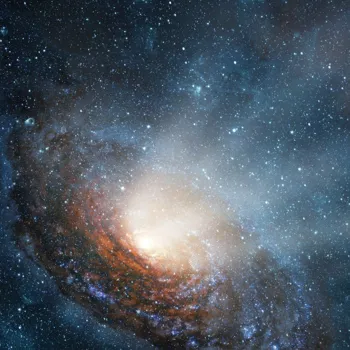
These starbursts can illuminate the merging galaxies, making them some of the brightest objects in the universe.
The merger process can also funnel gas into the supermassive black holes at the centers of the galaxies, causing them to become active galactic nuclei (AGN), emitting tremendous amounts of energy.
Galaxy mergers reshape structures, forming elliptical galaxies, fueling growth
The shapes of galaxies are significantly affected by mergers and interactions. Spiral galaxies, like our Milky Way, are often disrupted during mergers, losing their spiral arms and transforming into elliptical galaxies, which are more rounded and featureless.
The resulting galaxy is usually larger and more massive than the original galaxies. This process of galactic cannibalism, where larger galaxies absorb smaller ones, is a major mechanism for galaxy growth.
Simulations and observations both reveal that these interactions, while destructive on a galactic scale, are essential for the evolution of galaxies and the structuring of the cosmos.
Studying galaxy interactions and mergers reveals galactic evolution
Studying galaxy interactions and mergers provides valuable clues about the formation and evolution of galaxies. By observing galaxies at different stages of interaction, astronomers can piece together the sequence of events that occur during a merger.
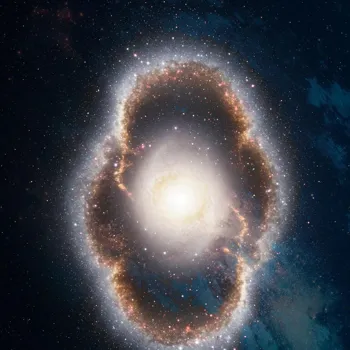
These observations, combined with sophisticated computer simulations, help us understand the physical processes that drive galactic evolution.
These models simulate the gravitational interactions of billions of stars and gas particles, recreate the observed features of interacting galaxies, and predict their future evolution.
This research helps us understand our cosmic history and predict what the future holds for our own galaxy and the universe as a whole.
Galaxies' gravitational dance shapes universe's evolution
The gravitational interplay between galaxies is a fundamental force shaping the universe. Interactions and mergers are not just rare events; they are an integral part of the life cycle of galaxies.
This ongoing cosmic dance of attraction and collision is reshaping galaxies, triggering star formation, and ultimately influencing the overall structure and evolution of the cosmos. By continuing to study these fascinating interactions, we can unlock even more of the universe's secrets.
Star formation in merging galaxies: burst of cosmic creation
The process of star formation in merging galaxies is a burst of cosmic creation. The collision of gas clouds compresses the gas, initiating a rapid increase in the birth rate of stars. Many of these new stars are massive and bright, giving the merging galaxies a dazzling appearance.
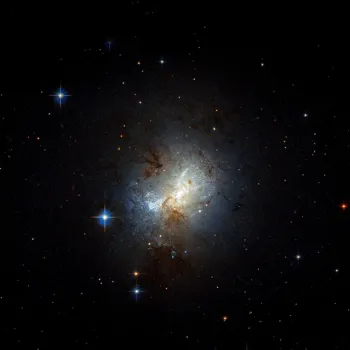
While star formation is enhanced, the merger can consume much of the available gas, ultimately limiting future star formation. This means that merging galaxies can go from being vibrant environments of star birth to relatively inactive galaxies.
Galactic mergers fuel black holes, impacting space environment
The impact of galactic mergers extends beyond just the stars and gas. The supermassive black holes residing at the center of most galaxies also play a role. During a merger, the black holes of the merging galaxies eventually sink to the center of the newly formed galaxy.
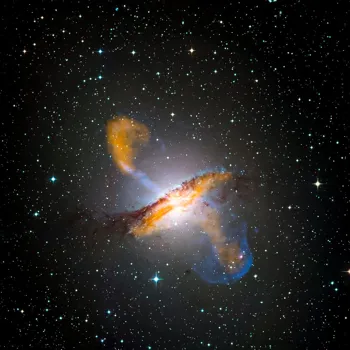
If these black holes are fueled with gas, they can become extremely active, emitting powerful jets of energy into space. These active galactic nuclei can have a significant impact on the surrounding environment, heating the gas.
Milky Way and Andromeda galaxies to collide in 4 billion years, forming "Milkomeda."
The future of our own galaxy, the Milky Way, is intertwined with the Andromeda galaxy. These two galaxies are on a collision course towards each other. In approximately four billion years, these two galaxies are expected to collide and merge.
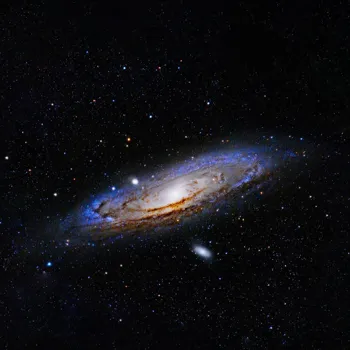
This cosmic event will drastically alter the appearance of our night sky, creating a new, larger galaxy astronomers are now calling "Milkomeda."
Galaxies collide, sparking star formation and merging black holes
While the collision may sound catastrophic, the chances of individual stars colliding are incredibly small. However, the merger will undoubtedly trigger bursts of star formation as the gas clouds of the two galaxies intermingle.
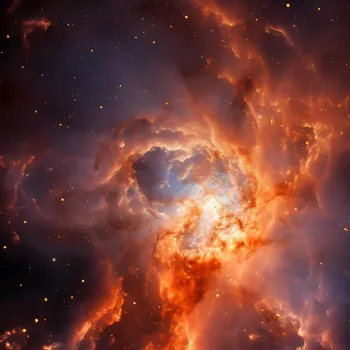
The supermassive black holes at the center of the Milky Way and Andromeda will also merge, potentially creating a more massive and active black hole.
Studying galactic interactions through various telescopes
Studying galactic interactions and mergers requires observations across the electromagnetic spectrum. Optical telescopes reveal the distribution of stars, while radio telescopes trace the gas and dust. X-ray telescopes detect the emission from active galactic nuclei and superheated gas.
By combining data. The understanding of how galaxies interact and evolve is continuously advancing, providing deeper insights into the mysteries of the cosmos.
Galactic interactions reveal universe's secrets
The study of galactic interactions and mergers is not just about understanding the past and future of galaxies; it also provides a broader context for understanding the universe as a whole.
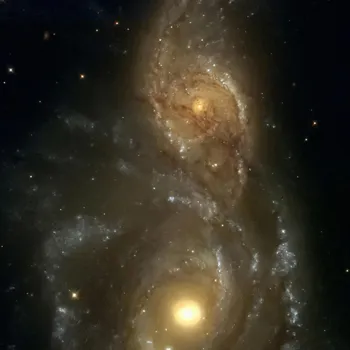
By studying these dynamic processes, research and gaining knowledge about the nature of gravity, the properties of dark matter, and the formation of large-scale structures in the universe. This understanding is essential for developing a complete picture of our place in the vast cosmic landscape.
AI Generated Content. Glance/InMobi shall have no liability for the content